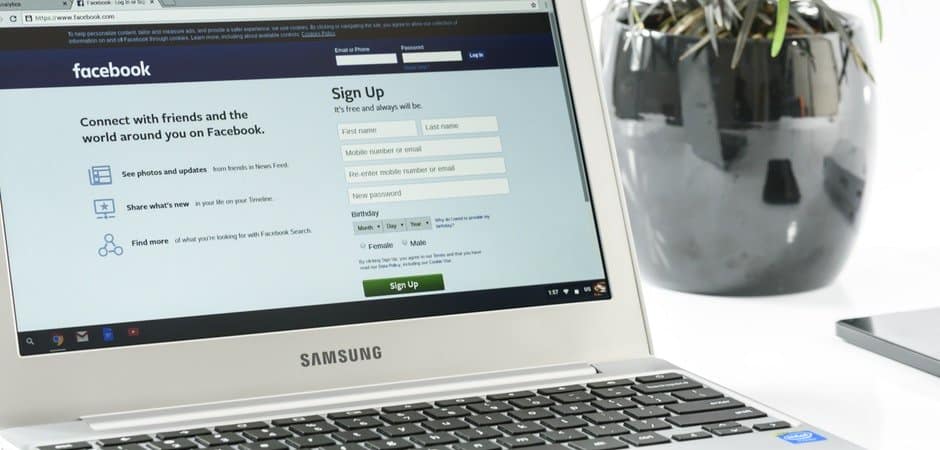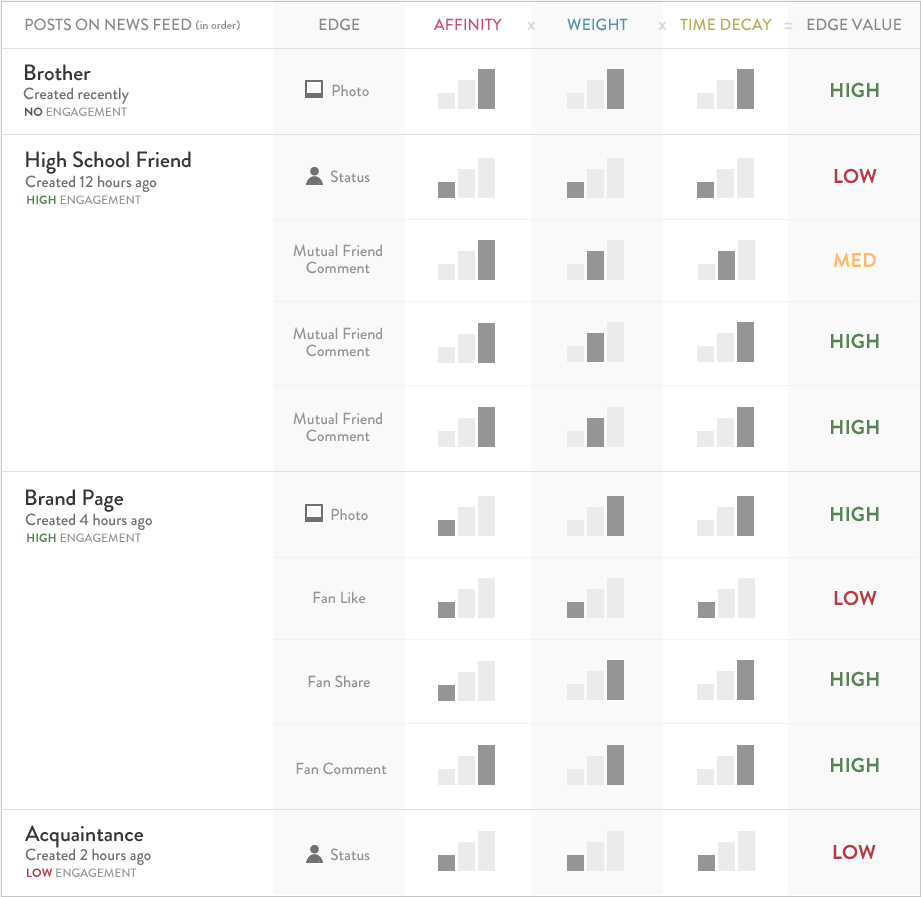
Ever wonder how Facebook determines what content appears in your newsfeed? You may also have wondered how to ensure that your content appears in other people’s feeds. The secret behind both lies in an algorithm called EdgeRank.
3 Tips to Improve your EdgeRank Strategy
EdgeRank was developed by Facebook and is based upon the idea that each piece of content (what you might call news) is an “edge.” Status updates, photo posts, shared links, “likes”, etc – every interaction is an edge. EdgeRank, therefore, is just what it sounds like – the ranking of edges in order of importance. That rank is determined by three factors that make up the algorithm – affinity, weight, and time decay.
1. Affinity
You may have noticed that some friends never seem to appear in your news feed, while others show up constantly. This is all based on how you use Facebook and your own interactions. The more you visit someone’s profile, comment on or like their content, the more importance they are given in the algorithm and the more content you will see from them.
It is important to remember when thinking about affinity that even though someone may have a high affinity ranking in your feed the same is not necessarily true for you in theirs. In order to boost your affinity ranking for others it is crucial that when you interact with their content they are interacting with you in return. Your interactions have little use unless they inspire others to interact back.
2. Weight
“Edge weight” is the concept that certain edges are more “weighty” or important than others. For example, photos, videos, and links tend to be weightier than other types of content. Edge weight is complicated in that weight can be both predetermined by Facebook and also depend on individual users – if one person clicks frequently on video updates they are probably more likely to see videos in their feed. The problem is you can really only guess what weighs the heaviest for your target audience. Many marketers feel safe to assume that photos have a greater weight (and therefore reach) than a simple status update – therefore when posting updates it is usually smart to include a photo along with your text.
Edge weight is also determined by how many comments or likes an edge receives. An edge can accumulate greater weight the more interactions people have with it. From a marketing standpoint you want to make sure as many people as possible are commenting and interacting with your content in order for it to have greater weight and appear in more people’s feeds. Note: Comments have more weight than likes, so the more discussion you generate the better!
3. Time Decay
Time decay is the most simple part of the algorithm – essentially, the more recent an edge is the more likely it is to appear at the top of your newsfeed. The time stamp on a post often outweighs both affinity and weight – this is why very old bits of content don’t surface their way to the top. To greater your chances of appearing in your friends’ feeds, post at a time of day when more people are more likely to be using Facebook. Tools like EdgeRank Checker can help you determine the best time of day to post and also check your own EdgeRank.
Below is a helpful graphic from What is EdgeRank? on how a brand can use EdgeRank to its advantage to improve its ranking among other content in a feed:

Still Looking For Answers? We Can Help!
Get the latest news
Blog Topics
- Analytics
- Branding & Identity
- Budget
- Construction
- Content Marketing
- Conversion Rate Optimization
- Email Marketing
- HubSpot
- Inbound Marketing
- Lead Generation
- Marketing Strategy
- News/Events
- Paid Search & PPC
- Recruiting
- Sales & Marketing
- Sales Enablement
- Search Engine Marketing
- Search Engine Optimization
- Social Media
- Thought Leadership
- Uncategorized
- Usability
- Video Marketing
- Web Hosting
- Website Design
